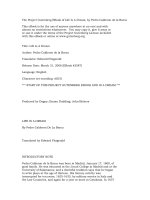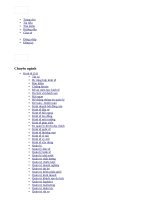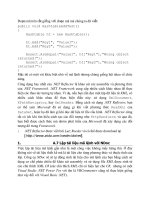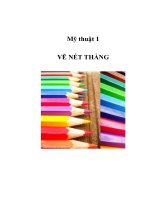my life without a net
Bạn đang xem bản rút gọn của tài liệu. Xem và tải ngay bản đầy đủ của tài liệu tại đây (3.06 MB, 217 trang )
W
NET
T
WITHOUT
ITHOUT AA NE
!
!
!
!
!
!
FOREWORD BY
Flying Funny
My Life
without a Net
Dudley Riggs
Foreword by Al Franken
University of Minnesota Press
Minneapolis
London
✭
✭
✭
✭
Flying
Funny
All photographs courtesy of the author, unless credited otherwise.
Copyright 2017 by Dudley Riggs
Foreword copyright 2017 by Al Franken
All rights reserved. No part of this publication may be reproduced,
stored in a retrieval system, or transmitted, in any form or by any
means, electronic, mechanical, photocopying, recording, or otherwise,
without the prior written permission of the publisher.
Published by the University of Minnesota Press
111 Third Avenue South, Suite 290
Minneapolis, MN 55401-2520
isbn 978-1-5179-0167-7 (hc)
isbn 978-1-5179-0094-6 (pb)
A Cataloging-in-Publication record for this book is available
from the Library of Congress.
Printed in the United States of America on acid-free paper
The University of Minnesota is an equal-opportunity
educator and employer.
22 21 20 19 18 17
10 9 8 7 6 5 4 3 2 1
This book is for Pauline,
my closest friend and loving wife,
now for more than a third of a century.
Contents
Foreword ix
Al Franken
Flying Funny
Introduction 7
1. The Polar Prince 11
2. Vaudeville 28
3. The World’s Fair 41
4. The Riggs Brothers Circus 49
5. School on the Road 63
6. The Circus at War 68
7. Flying Funny 80
8. Clown Diplomacy 88
9. Fliffus It Is! 102
10. Word Jazz 111
11. Never Let Them Know
You Can Drive a Semi 121
12. Change the Act? 131
13. Yes . . . Please! 138
14. Instant Theater 148
15. The New Ideas Program 161
16. Theater without a Net 175
Acknowledgments 183
Foreword
Al Franken
In 1968, two geeky teenagers went to a show at a small revue theater in Minneapolis called Dudley Riggs’ Brave New
Workshop. The geekier of the two, me, was a senior in high
school. The other, Tom Davis, was a junior. That night we saw
adult people doing what we wanted to do: perform onstage
and make people laugh.
Tom and I had been writing and performing at school,
teaming up to do morning announcements for laughs. Obviously, we had watched comedians on television. But for some
reason, seeing live comedy on a stage made show business
seem like a real option for two kids from Minnesota.
After the show, the cast did an improv set based on audience suggestions. Some of the stuff worked, some of it didn’t.
But that’s what made it even more exhilarating when the
performers scored. Improv techniques were also developing
at the more famous Second City in Chicago after it opened
ix
foreword
in 1959, and Tom and I often referred to Dudley’s as Third
City.
Tom and I kept returning for the improv sets, which were
free. We quickly got to know the performers, who were really
just a few years older than we were. After one of those sets, we
met Dudley Riggs.
Dudley was an exotic figure for two suburban boys. He’s
actually an exotic figure, period. A former vaudevillian and
circus performer, Dudley evoked Professor Marvel from The
Wizard of Oz. Bow-tied, slightly rotund, jovial, and, at the
time, I think, someone who enjoyed an alcoholic beverage
or two or three, Dudley was one of the first larger-than-life
characters I’ve been fortunate (and in one or two instances,
unfortunate) to meet.
Dudley took an interest in me and Tom and invited us to
get up onstage on what, at most comedy clubs, is called “open
mic night.” Except here the theater was so small there was no
need for microphones. As a matter of fact, there were really
no comedy clubs in America at that time. No places called The
Punchline or Zanies or the Laugh Factory.
Tom and I got up on a Monday night—I think. I do remember getting laughs with our parody of a local newscast taking
place on the night after the day of World War III. Dudley liked
us and said he saw “sparks.” Holy moly!
Before long, we were doing our own two-man show at
the Workshop, getting not only notes from Dudley but also
money. We were professional comedians!
But off I went to college. During the summers, Tom and I
would do shows at the Workshop. I also had a day job, workx
foreword
ing for my suburb’s street department, mowing grass and
weeds around the water tower and other city property on an
industrial-sized rider mower. The schedule started getting the
best of me, and one night I got a terrible migraine before our
show. I told Tom he might have to cover if I suddenly had to
run backstage and throw up.
Fortunately, Tom had been working on a couple of monologues and pulled it off. The audience figured out what was going on and gave us a standing ovation at the end of the show.
Dudley had been watching from the back of the house and
came backstage to commend us. While I was lying facedown
on a couch, Tom asked Dudley what would have happened if
I’d thrown up on stage.
“The audience would have all left,” he said with the absolute
assurance of a grizzled show-business veteran.
In the fall, I’d go to college, and Tom joined the regular
cast at the Workshop, becoming a hilarious improvisational
performer. I regret that I never had that improv training that
Saturday Night Live cast members from John Belushi, Jane
Curtin, Bill Murray through to Will Ferrell, Amy Poehler, and
Tina Fey were all steeped in.
At the end of the summer between my junior and senior
years of college, Tom and I hitchhiked from Minneapolis to
L.A. We stayed with Pat Proft, a Brave New Workshop alum,
who went on to cowrite the Naked Gun movies, the Police
Academy movies, and tons of others. Pat got us a slot at The
Comedy Store, a new stand-up club on the Sunset Strip, and
suddenly our peers in the stand-up world knew who we were.
It was because Dudley recognized some “sparks” when we
xi
foreword
were in high school that Tom and I became Franken and Davis. After becoming writer/performers on SNL, we kept returning to Dudley’s to work out material that would find its
way on the show.
Dudley couldn’t have been prouder of us. And I couldn’t be
prouder of being an alum of his theater and a friend.
xii
Flying Funny
★
I rosin my hands after I’m up the ladder. That way, none is
lost in the climb. Besides, the ritual of powdering my hands
builds audience anticipation. We buy solid rosin blocks at a
music store. The deep amber intended for the bows of cellos
and violins is crushed and placed in a clean white sock to
become a rosin powder bag that makes my hands sticky and
improves my grip.
As I prepare to fly, I focus on the little details, almost
unaware of the crowd—the big picture—what I’m about to do.
Then I release my feet from the platform, hop tall, point my
toes, and fly. Now I feel the rush, the aliveness, the arousal,
and the fun of flying.
Aerial acrobatics do not feel the way they appear to the
audience. I do not see myself at this moment as a figure fluidly
passing from one trapeze and flying into the hands of another
man swinging in the air. Instead, I concentrate on getting
pumped, on getting plenty of air before taking the fly bar. The
fly bar is heavy—a solid rod of steel—and when you take the
bar it has energy, you have to be ready to go—it could pull you
right off the pedestal if your balance fails. When the catcher
wraps his legs into a Dutch Lock, I know it’s time. The catcher
swings out and back, two swings to complete the geometry of
my one longer arc. When he’s at the near end of his swing, “it’s
showtime,” and I must go down the hill of space and meet him
as he comes up to take my wrists.
It is surprisingly easy to forget the way it must look to the
audience, the way it must feel to someone watching as we
risk death for a living. The flying trapeze remains the most
graceful, romantic act in the circus, and after many years
of flying, I’m still a little astonished when I see someone else
performing in a great flying act.
People are afraid of the unknown. Most people have a
fear of falling. But flyers need to believe that is a learned fear.
We don’t climb the circus ladder in fear. Gravity is a known
constant—gravity is reliable—always there to power my swing.
We aren’t nuts up there; we do have a respect for gravity.
And so when I take these steps, I climb the rope ladder,
heels first, pressing against the sides to maintain tension. It’s
what I know. Just as I know at what point my hands might
start to sweat and defeat my grip. I know when I reach the
top how to retrieve the bar, find the spot to stand, how far to
lean back on the lines. I know these steps to the point that
I don’t have to think about them anymore; it’s in my head
and muscle memory. I’m not thinking, “Can I do this?” I’m
thinking, “Hey, watch this!”
“Breathe positive and enjoy the moment,” Doc always said.
Doc was my teacher, my trapeze partner, and my dad. “You
are working for that moment when the crowd gasps, then
cheers, the moment when fear gives way to exhilaration,” he
said. “Face it, Son, flying is sexy.”
And risky. Pride plays an illusive role in the circus;
arrogant pride can get you killed. You just don’t want to
get too cocky. Just when you think you are the best, chances
are you’ll blow it; you are not the best once you think you
are—kind of a paradox, right? Flying tricks require subtle
confidence and, of course, faith in what you are doing. You
also need to remember why you’re up there: to entertain the
public, to enjoy doing what they can’t do.
A flyer must have pride in his passes and faith in the
catcher. The catcher is the one who really makes the act. A
good catcher is valuable beyond measure, someone who just
might save your life. He is someone who can straighten you
out, untangle a mess you’ve made of a trick, and get you safely
back to the bar so that you can take the applause.
“You are too tall to ever be a great flyer,” my flying coach,
Freddy Valentine, once told me. “Your height works for you in
the horizontal bar act—but for the flying act, you’re too tall
to ball up in your tuck.” Fred, an old-time flyer, was wise and
very honest. “Look, you can fly funny, all flailing arms and
crazy legs, but you’re too damn tall to fly straight. Stick with
comedy.”
Eventually I had to decide: to fly or be funny. Improvisational theater turned out to be both.
INTRODUCTION
“Show business is America, America is show business,” Billy
Rose, the great showman, liked to say. Today, when show business is such a vast enterprise, it’s hard to believe there was a
time when show business outside of the major cities meant
only “variety show business”: vaudeville and the circus. All
manners of entertainment—from dancers, acrobats, and jugglers to contortionists and hand balancers—performed with
music but often without words. Silent, pantomime acts—
“dumb acts”—were interspersed with singers, actors, and
comedians. “Novelty acts,” a term that stripped away an act’s
claim to ever be considered important, fit under the banner
of “variety.”
Variety acts so dominated the field of vaudeville entertainment that the trade journal for show business was and is still
named Variety. Of course, in big cities, there was also legit
theater and opera, which offered high prestige, but often paid
a lot less. Some stars found themselves taking home more
7
introduction
money in Peoria than they could in New York. It was okay to
brag about your European tour, but not a good idea to talk up
those twelve weeks playing small houses in all of those inland
states where most of America’s food comes from.
My parents were performing in vaudeville in Little Rock,
Arkansas, when I was born. My crib was a hotel dresser
drawer, and my nanny was Albert White (known as Flo), a
male–female clown. As soon as I was able to sit up, they cast
me in the circus—parading in a pony cart. My life in show
business began.
So far I’ve had three show business careers. In my adult life,
I produced and directed more than 250 original live theatrical
productions at Dudley Riggs’ Brave New Workshop. Known
as the nation’s oldest ongoing satirical comedy theater, Brave
New Workshop still today presents social and political satire in revue format year-round. Many of America’s greatest
comedy artists, writers, actors, and producers learned the art
of improvisation on my stage before going on to fame and
fortune.
That list is long. It includes Louie Anderson, Avner the
Eccentric, Del Close, Mo Collins, The Flying Karamazov
Brothers, Franken & Davis, Lorna Landvik, Carl Lumbly, Peter MacNicol, Pat Proft, Penn & Teller, Stevie Ray, Sue Scott,
Rich Sommer, Nancy Steen, Steven Schaubel, Faith Sullivan,
Peter Tolan, Linda Wallem, and Lizz Winstead. The theater—
now known as the Brave New Workshop Comedy Theater—
continues to make me proud. But these years spent producing
and directing at the Brave New Workshop were actually my
third career.
8
introduction
My first career was as a child star in vaudeville, and my
second was as a fearless circus flyer. I performed for the Russell
Brothers Circus, the Blackpool Tower Circus (England), Cirko
Grande (Havana, Cuba), the Al G. Kelly & Miller Brothers
Circus (USA), Stevens Brothers Circus (USA), the Dolly Ja‑
cobs Circus (Canada and Alaska), the E. K. Fernandez AllAmerican Circus (Japan), and the Grande Cirko Americano (Puerto Rico). In vaudeville, I performed on the Barnes
and Caruthers, Shubert, and Sacco entertainment circuits,
throughout the United States.
I had loving parents, helpful uncles, and a grande dame of a
Victorian grandmother who would only bring out her crystal
ball if other family members couldn’t get work. Adults treated
me like an equal, as long as I hit my mark on cue. Because my
family was always on the road, I never had a hometown. For
me, “home” was where the work was.
I grew up listening to nineteenth-century circus music,
abiding by the rules of the highly organized, glamorous, immensely complicated business that thrives on tradition, wondrous hyperbole, and the command of the ringmaster. The
circus runs on rules.
In college I discovered and became overly fond of modern
jazz, which seemed above rules. My mind’s ear was filled with
jazz and circus music but crowded by a stubborn, recurrent
notion I had of creating an original scene onstage while performing it.
“Theater without a script,” created by the actors through
“free association,” was a concept from psychotherapy just
entering my thinking in the 1950s. This would be theater of
9
introduction
words not memorized from a script written by someone else
or from some other time and place, but words discovered by
the actors themselves. Words made up spontaneously in performance, not contrived in advance for performance. People
said . . . that’s an insane idea.
It took time, crazy dedication, and a few evictions to build
an audience for this new kind of theater. It took actors willing
to trust me, take the risk, listen, cooperate, and trust their talent. Actors who want to work this way are finding places that
encourage them now, but we went through a long phase when
actors were screaming inside for an audience but had no place
to perform. What actually started out as a tool to cover stage
waits in vaudeville and control drunks in a nightclub audience
became a new way to communicate and entertain.
My life has been constantly in motion, toward mostly unplanned goals: testing, evolving, curious about the next surprise. Happily seeking satirical targets and exposing vice and
folly. Always looking for fresh minds, talented artists, new
ideas, and astonishment. Keeping my “suitcase act” always at
the ready.
What follows is the story of a boy growing up in the rigid
tradition of the circus and in vaudeville, and the unconventional education that prepared him for forty years of producing comedy theater, experimenting, and eventually developing
a way to work improvisationally.
It would seem an unlikely path to travel from the exacting traditions of the well-ordered circus to the “no rules” philosophy of the improvisational stage. But both must entertain.
And start on time.
10
★
1 ★
The Polar Prince
The amazing aerial artists, Riggs & Riggs, performed their
uniquely romantic, and dangerous pas de deux on the high
trapeze. This young married couple has toured in circuses
internationally, always with top billing and income, striving
to be the best double trapeze act in the world. In America
they are always placed high over the center ring.
—new york post, april 11, 1928
I was born as planned during the off-season. My arrival on the
coldest day in January 1932—in the bottom year of the Great
Depression—was a conscious, perhaps imprudent, decision
on my parents’ part after five years of marriage during bad
economic times. I know all of this because of my mother’s
constant reminder: “Always remember, you were born a very
much wanted child.”
I was soon touring the country with the Russell Brothers
Circus, a large motorized circus, a big “mud show.” It was one
of many such shows during the golden age of circus. In the
11
the polar prince
1930s and 1940s there were dozens of circuses in America, all
smaller than the Ringling Brothers or Cole Brothers, but by
no means tiny. They all had the requisite three rings expected
by the public with lions, tigers, elephants, and clowns. A
great American tradition, mud shows brought education and
entertainment to the small towns that were passed over
by the grand railroad-mounted circuses. My folks originated a beautiful but risky high aerial double trapeze act
performed forty feet in the air without a net. The announcer
proclaimed “beauty and danger aloft”—so that all eyes would
be on Riggs & Riggs.
My parents, lacking a regular babysitter, decided to keep
track of me by putting me in the show. Management outfitted a little wagon pulled by a tiny canyon pony (a horse breed
thirty-four inches high) that was led around the hippodrome
track in the opening spectacle. Before the season was over, my
parents upgraded my tour of the track, replacing the pony
with a muzzled polar bear cub pulling a wheeled sleigh, and
I was dressed in a fur cape and a crown. I was presented, in
circus hyperbole, as the Polar Prince from the North Pole.
When we hit hot weather, the polar bear, which couldn’t tolerate the ninety-degree weather, went nuts! So we went back
to using the pony—but they kept me in the hot fur robe.
All I remember is what I was told—and that the polar bear
deserved better treatment.
Russell Brothers was a national show, but like many of
the motorized shows, tended not to go farther west than
Denver because of the difficulty of getting heavy trucks and
elephants over the Rocky Mountains. In 1940 we owned our
12









